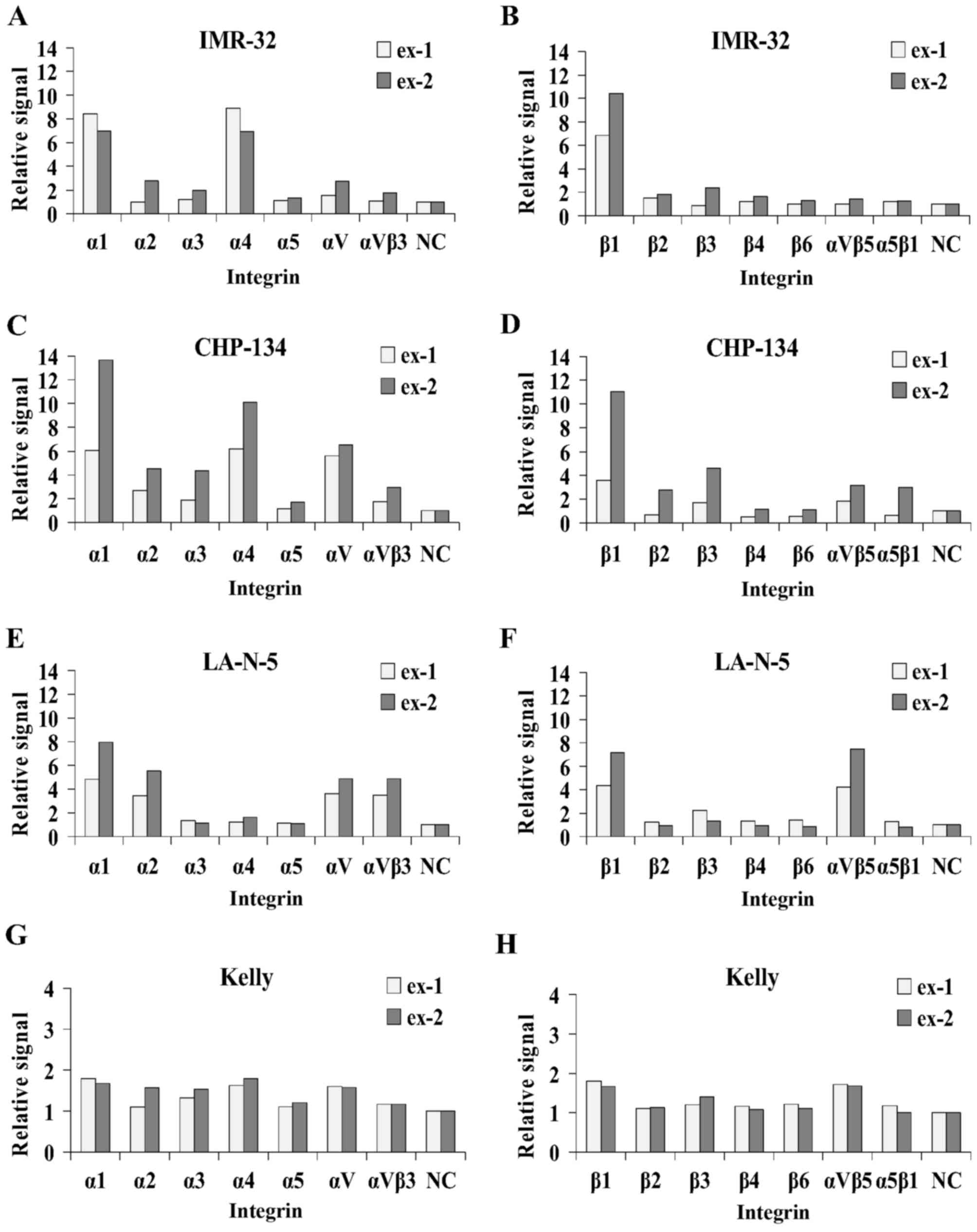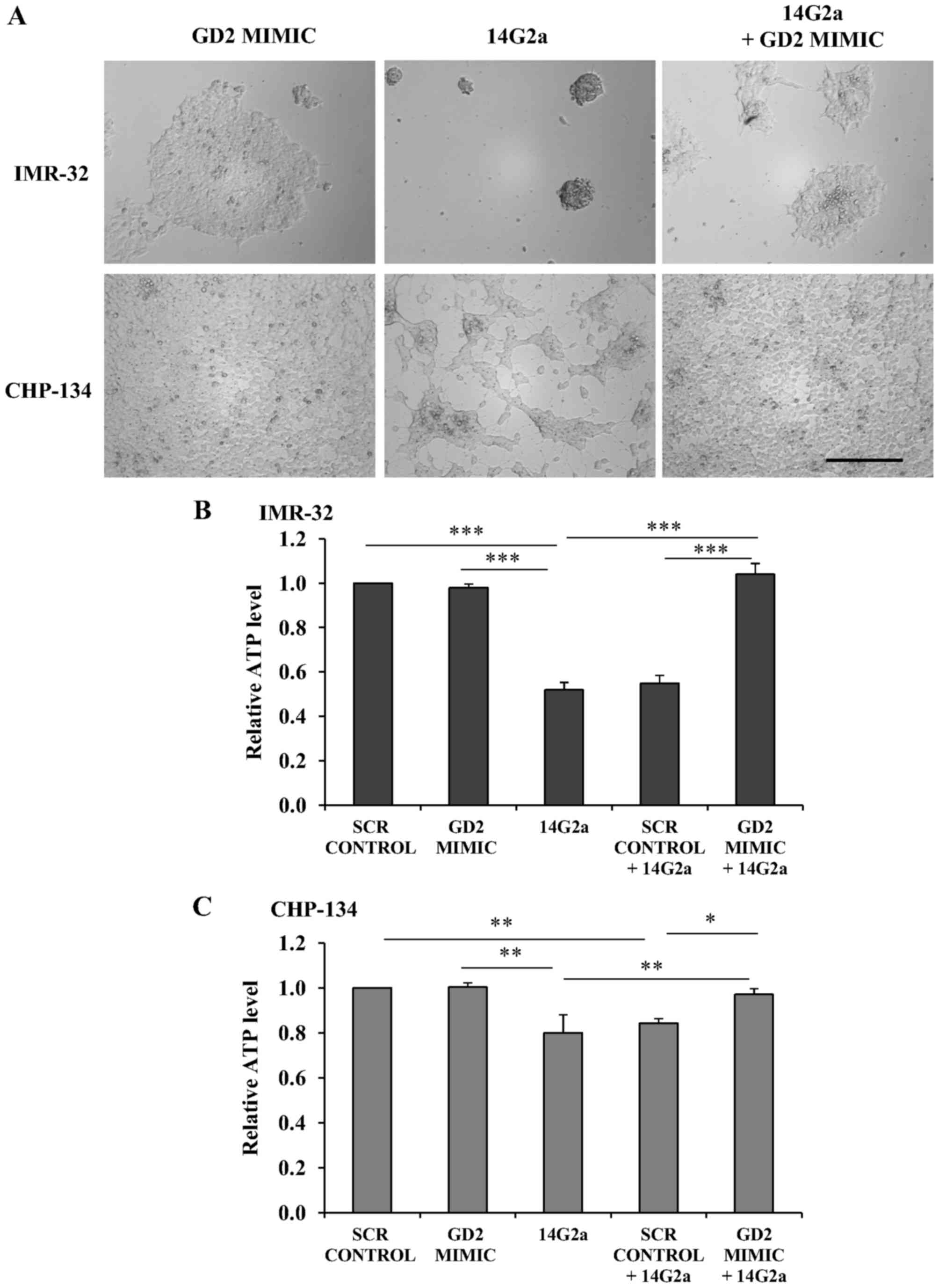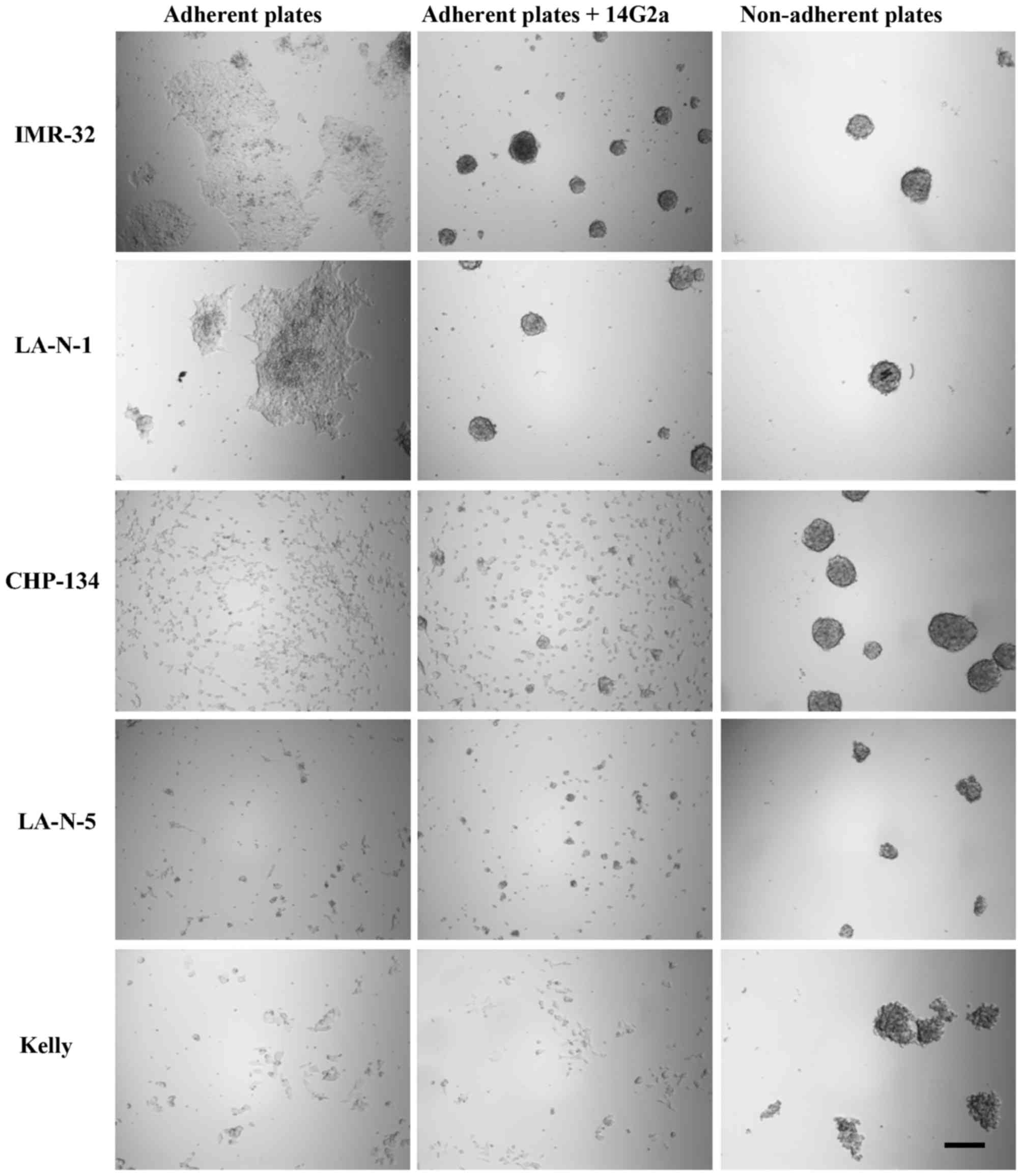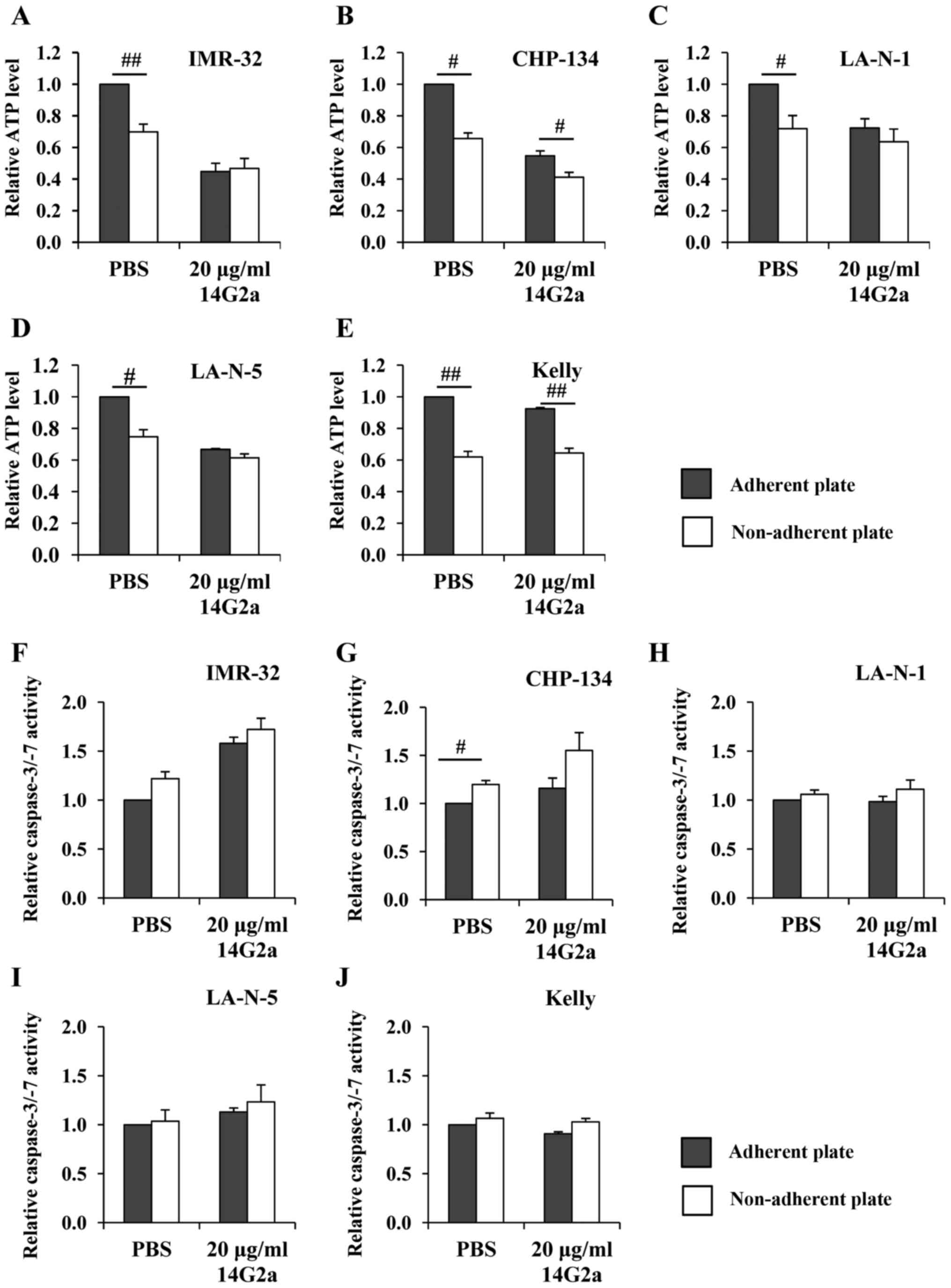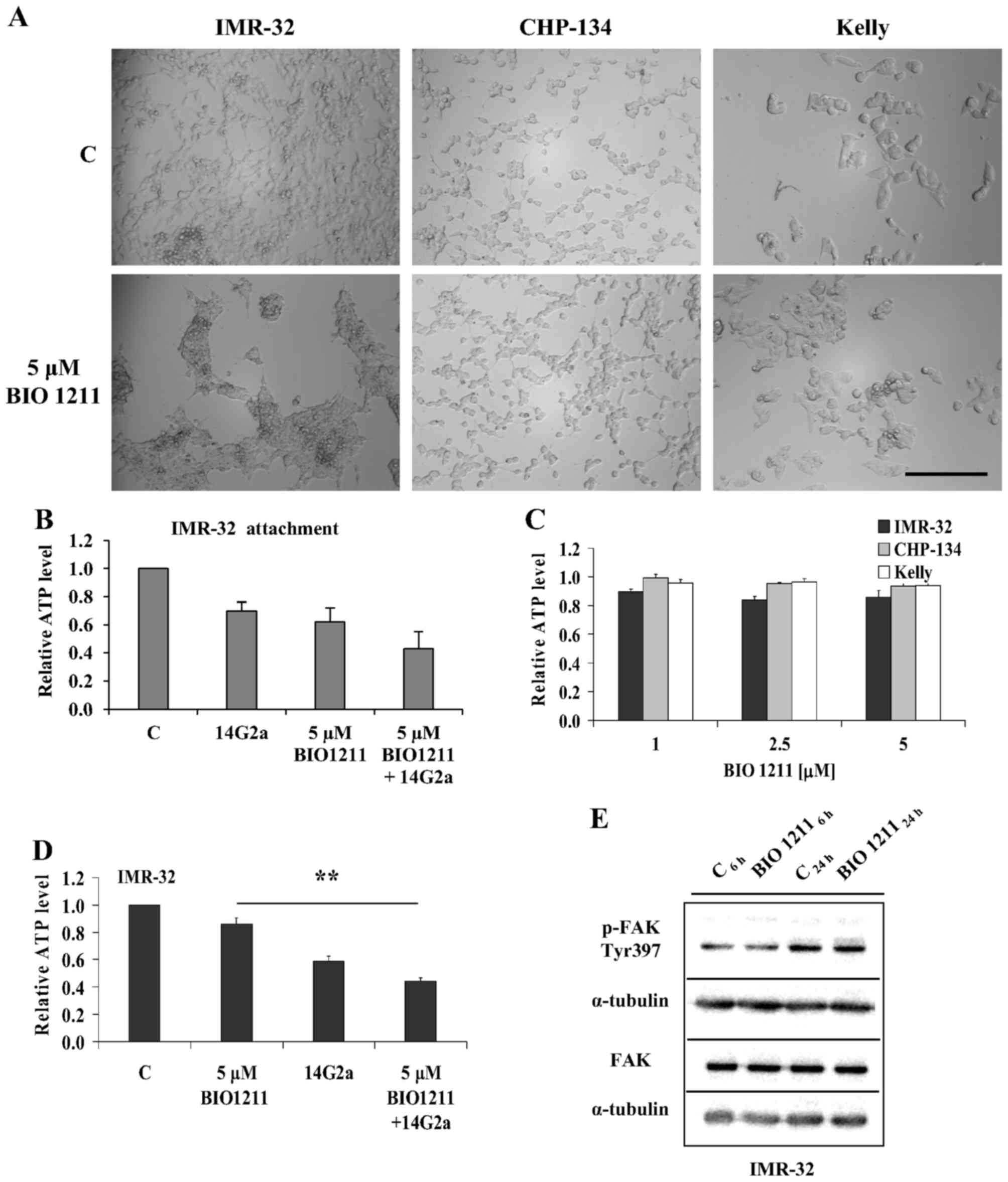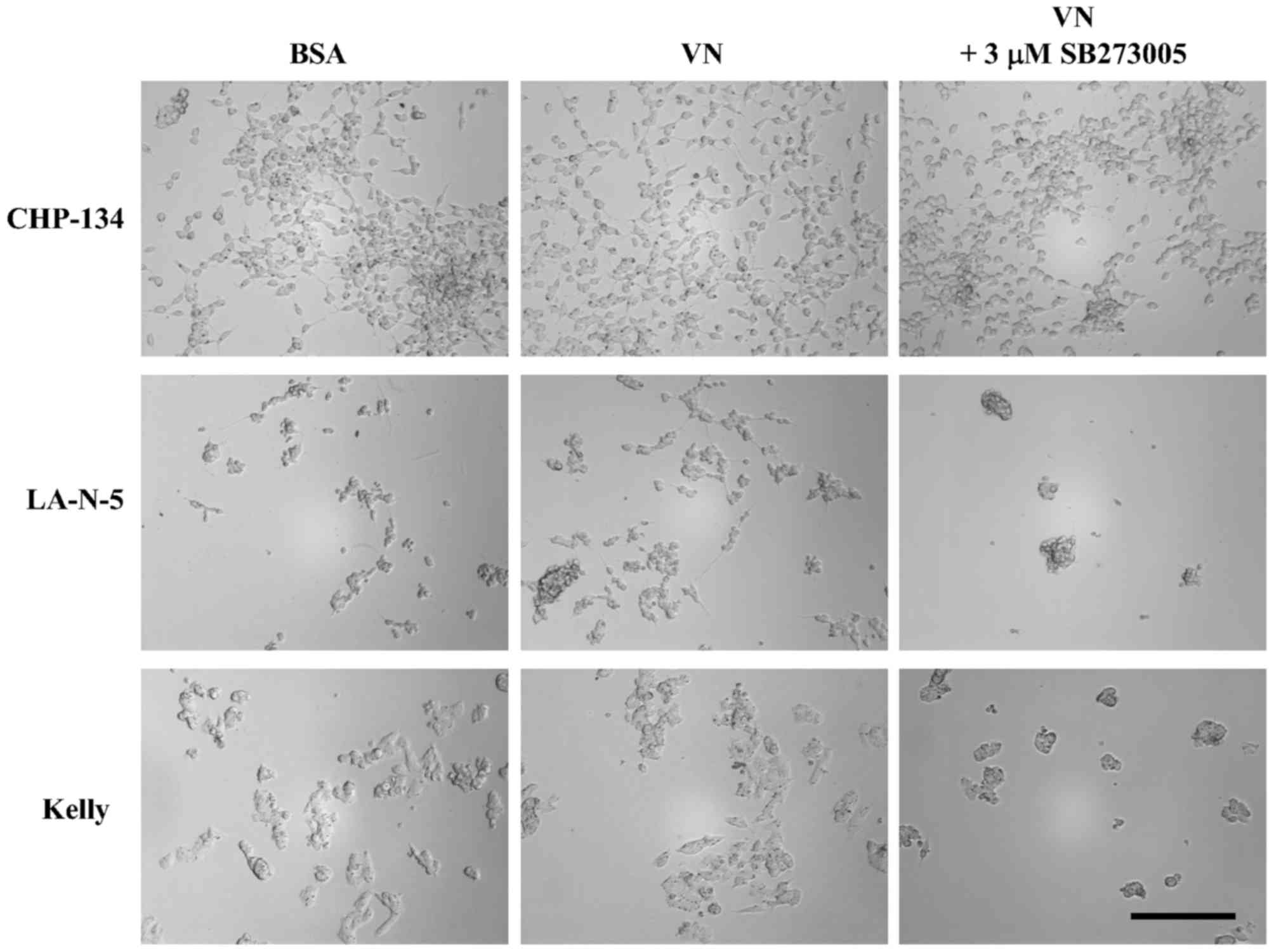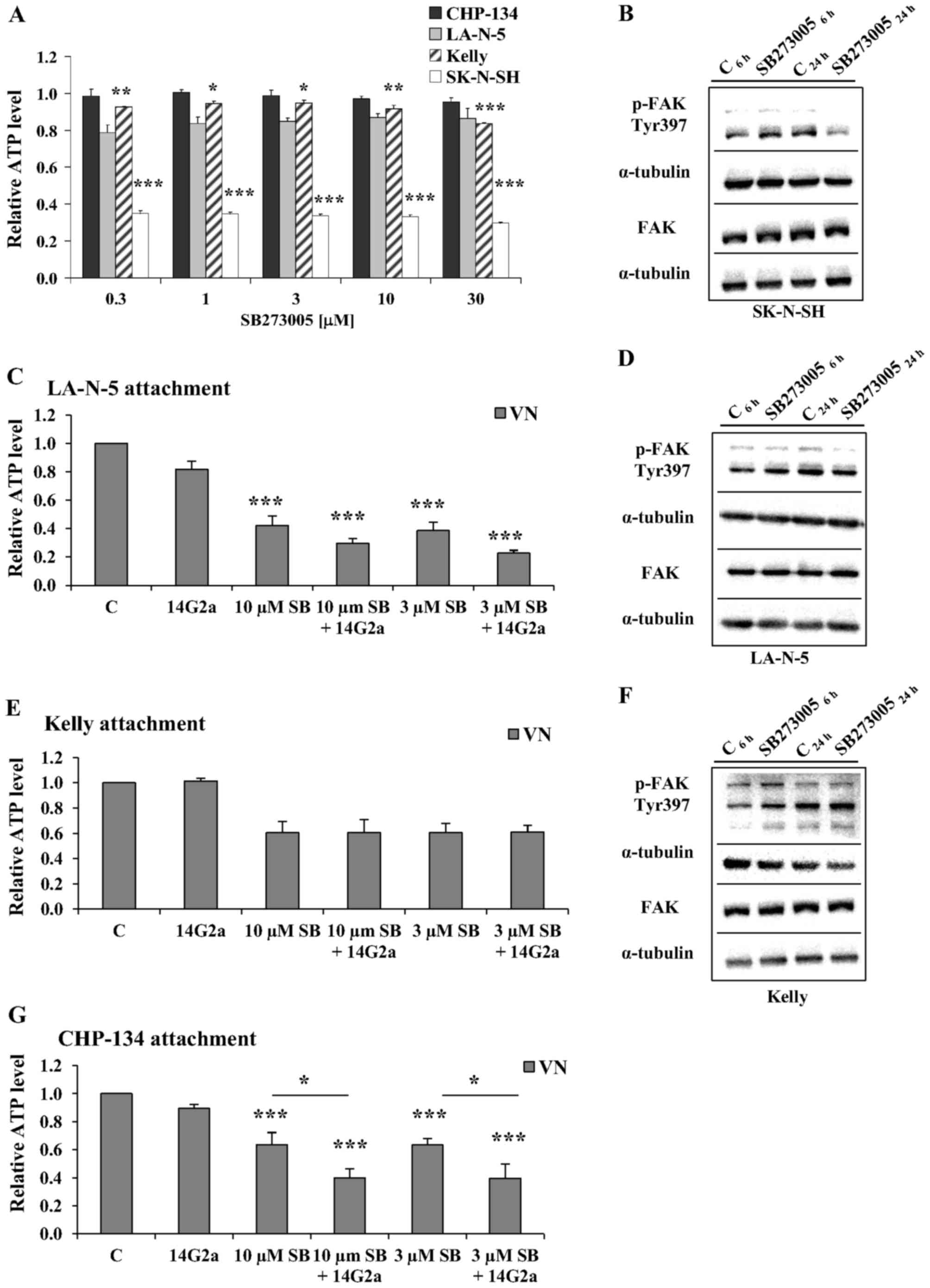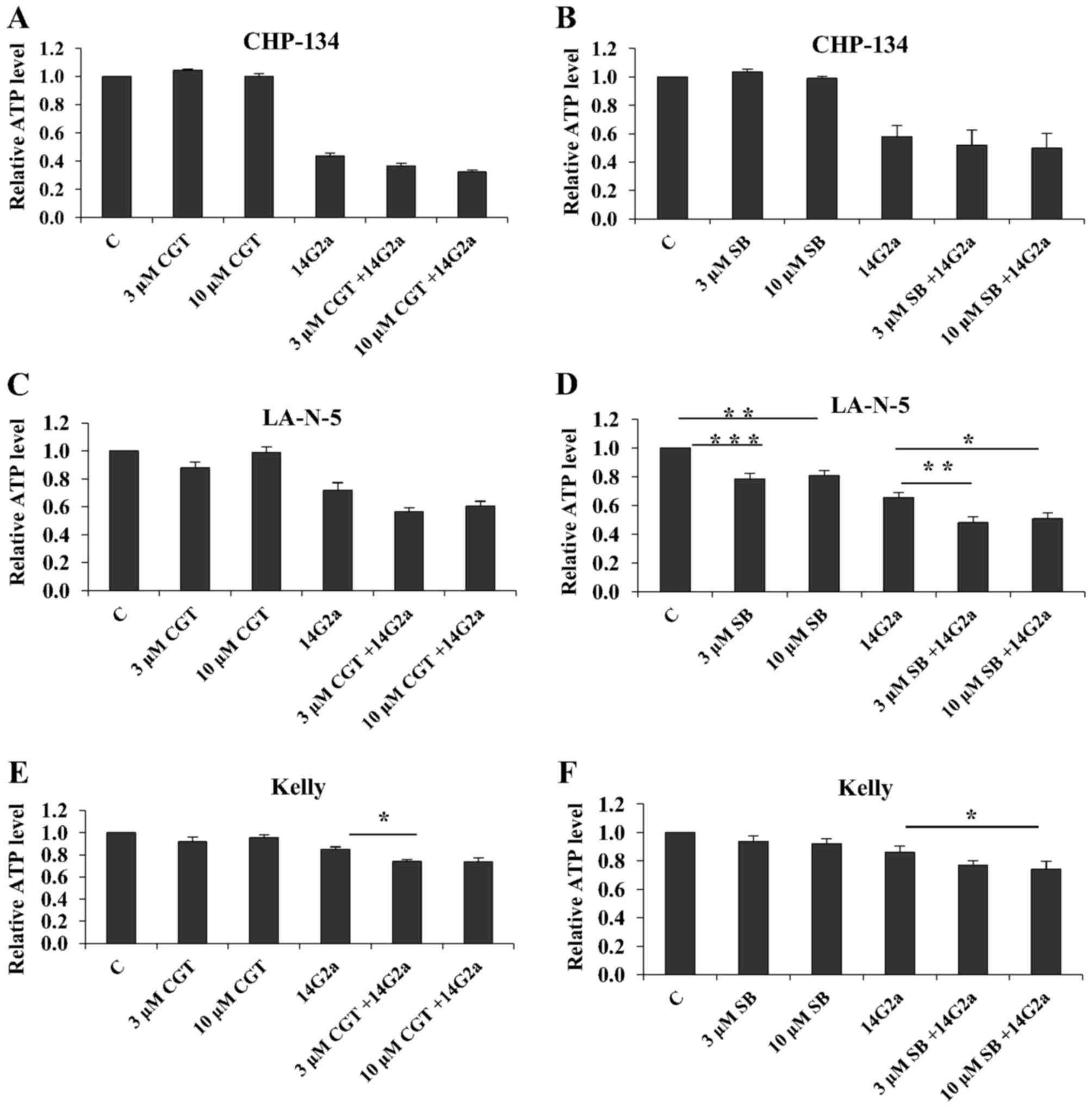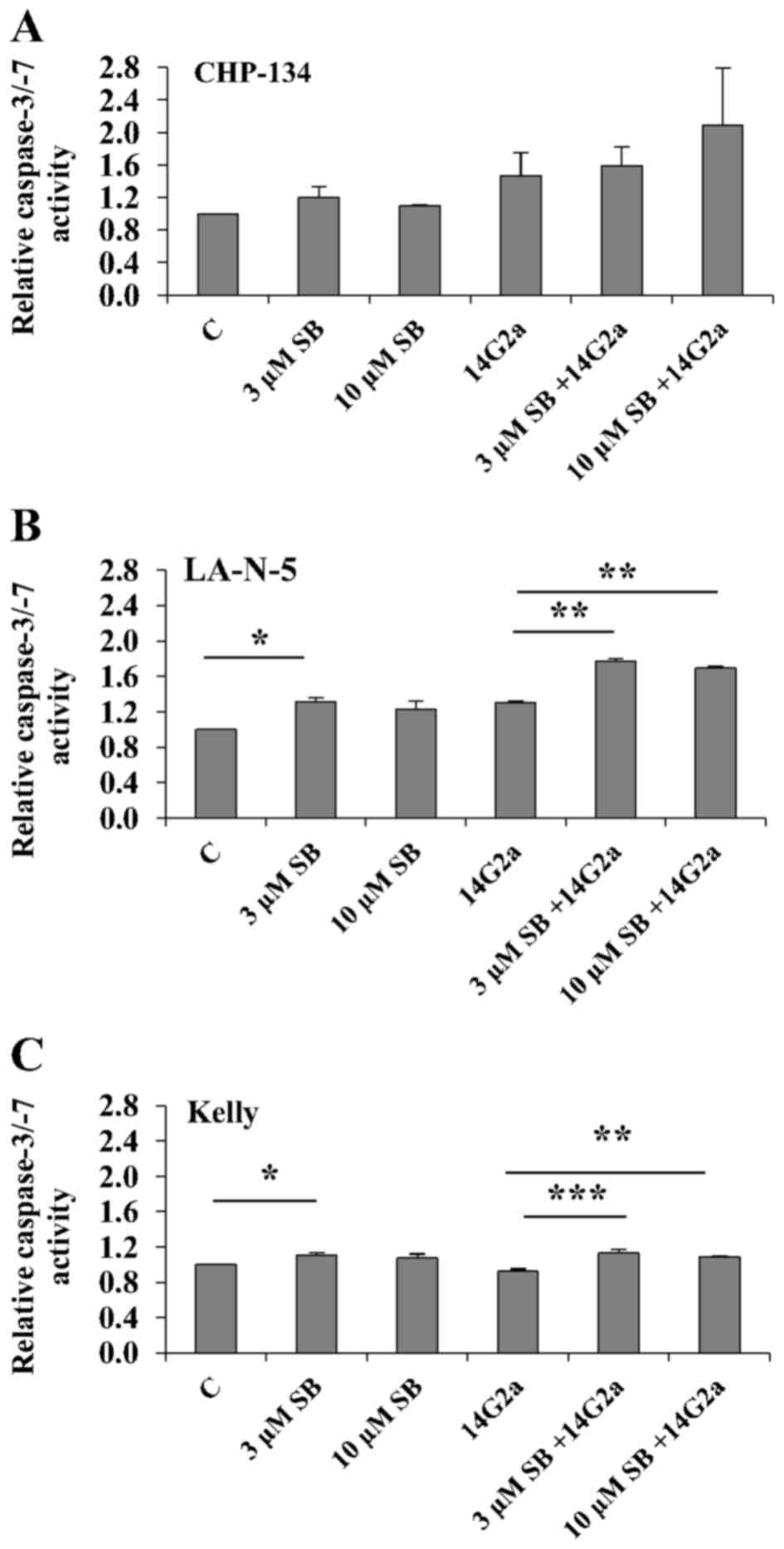|
1
|
Cheung NK and Dyer MA: Neuroblastoma:
Developmental biology, cancer genomics and immunotherapy. Nat Rev
Cancer. 13:397–411. 2013. View Article : Google Scholar : PubMed/NCBI
|
|
2
|
Schmidt ML, Lal A, Seeger RC, Maris JM,
Shimada H, O'Leary M, Gerbing RB and Matthay KK: Favorable
prognosis for patients 12 to 18 months of age with stage 4
nonamplified MYCN neuroblastoma: A Children's Cancer Group Study. J
Clin Oncol. 23:6474–6480. 2005. View Article : Google Scholar : PubMed/NCBI
|
|
3
|
Pugh TJ, Morozova O, Attiyeh EF,
Asgharzadeh S, Wei JS, Auclair D, Carter SL, Cibulskis K, Hanna M,
Kiezun A, et al: The genetic landscape of high-risk neuroblastoma.
Nat Genet. 45:279–284. 2013. View Article : Google Scholar : PubMed/NCBI
|
|
4
|
Smith MA, Seibel NL, Altekruse SF, Ries
LA, Melbert DL, O'Leary M, Smith FO and Reaman GH: Outcomes for
children and adolescents with cancer: Challenges for the
twenty-first century. J Clin Oncol. 28:2625–2634. 2010. View Article : Google Scholar : PubMed/NCBI
|
|
5
|
Navid F, Santana VM and Barfield RC:
Anti-GD2 antibody therapy for GD2-expressing tumors. Curr Cancer
Drug Targets. 10:200–209. 2010. View Article : Google Scholar : PubMed/NCBI
|
|
6
|
Hoy SM: Dinutuximab: A review in high-risk
neuroblastoma. Target Oncol. 11:247–253. 2016. View Article : Google Scholar : PubMed/NCBI
|
|
7
|
Yu AL, Gilman AL, Ozkaynak MF, London WB,
Kreissman SG, Chen HX, Smith M, Anderson B, Villablanca JG, Matthay
KK, et al Children's Oncology Group: Anti-GD2 antibody with GM-CSF,
interleukin-2, and isotretinoin for neuroblastoma. N Engl J Med.
363:1324–1334. 2010. View Article : Google Scholar : PubMed/NCBI
|
|
8
|
Horwacik I and Rokita H: Targeting of
tumor-associated ganglio-sides with antibodies affects signaling
pathways and leads to cell death including apoptosis. Apoptosis.
20:679–688. 2015. View Article : Google Scholar : PubMed/NCBI
|
|
9
|
Cochonneau D, Terme M, Michaud A,
Dorvillius M, Gautier N, Frikeche J, Alvarez-Rueda N, Bougras G,
Aubry J, Paris F, et al: Cell cycle arrest and apoptosis induced by
O-acetyl-GD2-specific monoclonal antibody 8B6 inhibits tumor growth
in vitro and in vivo. Cancer Lett. 333:194–204. 2013. View Article : Google Scholar : PubMed/NCBI
|
|
10
|
Horwacik I, Durbas M, Boratyn E, Węgrzyn P
and Rokita H: Targeting GD2 ganglioside and aurora A kinase as a
dual strategy leading to cell death in cultures of human
neuroblastoma cells. Cancer Lett. 341:248–264. 2013. View Article : Google Scholar : PubMed/NCBI
|
|
11
|
Durbas M, Horwacik I, Boratyn E, Kamycka E
and Rokita H: GD2 ganglioside specific antibody treatment
downregulates PI3K/Akt/mTOR signaling network in human
neuroblastoma cell lines. Int J Oncol. 47:1143–1159.
2015.PubMed/NCBI
|
|
12
|
Hynes RO: Integrins: Bidirectional,
allosteric signaling machines. Cell. 110:673–687. 2002. View Article : Google Scholar : PubMed/NCBI
|
|
13
|
Bouvard D, Pouwels J, De Franceschi N and
Ivaska J: Integrin inactivators: Balancing cellular functions in
vitro and in vivo. Nat Rev Mol Cell Biol. 14:430–442. 2013.
View Article : Google Scholar : PubMed/NCBI
|
|
14
|
Jin H and Varner J: Integrins: Roles in
cancer development and as treatment targets. Br J Cancer.
90:561–565. 2004. View Article : Google Scholar : PubMed/NCBI
|
|
15
|
Hersey P, Sosman J, O'Day S, Richards J,
Bedikian A, Gonzalez R, Sharfman W, Weber R, Logan T, Buzoianu M,
et al Etaracizumab Melanoma Study Group: A randomized phase 2 study
of etaracizumab, a monoclonal antibody against integrin
αvβ3, ± dacarbazine in patients with stage IV
metastatic melanoma. Cancer. 116:1526–1534. 2010. View Article : Google Scholar : PubMed/NCBI
|
|
16
|
Bell-McGuinn KM, Matthews CM, Ho SN, Barve
M, Gilbert L, Penson RT, Lengyel E, Palaparthy R, Gilder K, Vassos
A, et al: A phase II, single-arm study of the anti-α5β1 integrin
antibody volociximab as monotherapy in patients with
platinum-resistant advanced epithelial ovarian or primary
peritoneal cancer. Gynecol Oncol. 121:273–279. 2011. View Article : Google Scholar : PubMed/NCBI
|
|
17
|
Stupp R, Hegi ME, Gorlia T, Erridge SC,
Perry J, Hong YK, Aldape KD, Lhermitte B, Pietsch T, Grujicic D, et
al European Organisation for Research and Treatment of Cancer
(EORTC); Canadian Brain Tumor Consortium; CENTRIC study team:
Cilengitide combined with standard treatment for patients with
newly diagnosed glioblastoma with methylated MGMT promoter (CENTRIC
EORTC 26071–22072 study): A multi-centre, randomised, open-label,
phase 3 trial. Lancet Oncol. 15:1100–1108. 2014. View Article : Google Scholar : PubMed/NCBI
|
|
18
|
Young SA, McCabe KE, Bartakova A, Delaney
J, Pizzo DP, Newbury RO, Varner JA, Schlaepfer DD and Stupack DG:
Integrin α4 enhances metastasis and may be associated with poor
prognosis in MYCN-low neuroblastoma. PLoS One. 10:e01208152015.
View Article : Google Scholar
|
|
19
|
Lee S, Qiao J, Paul P and Chung DH:
Integrin β1 is critical for gastrin-releasing peptide
receptor-mediated neuroblastoma cell migration and invasion.
Surgery. 154:369–375. 2013. View Article : Google Scholar : PubMed/NCBI
|
|
20
|
Cheresh DA, Pierschbacher MD, Herzig MA
and Mujoo K: Disialogangliosides GD2 and GD3 are involved in the
attachment of human melanoma and neuroblastoma cells to
extracellular matrix proteins. J Cell Biol. 102:688–696. 1986.
View Article : Google Scholar : PubMed/NCBI
|
|
21
|
Ohkawa Y, Miyazaki S, Miyata M, Hamamura K
and Furukawa K and Furukawa K: Essential roles of integrin-mediated
signaling for the enhancement of malignant properties of melanomas
based on the expression of GD3. Biochem Biophys Res Commun.
373:14–19. 2008. View Article : Google Scholar : PubMed/NCBI
|
|
22
|
Dippold WG, Knuth A and Meyer zum
Büschenfelde KH: Inhibition of human melanoma cell growth in vitro
by monoclonal anti-GD3-ganglioside antibody. Cancer Res.
44:806–810. 1984.PubMed/NCBI
|
|
23
|
Kowalczyk A, Gil M, Horwacik I, Odrowaz Z,
Kozbor D and Rokita H: The GD2-specific 14G2a monoclonal antibody
induces apoptosis and enhances cytotoxicity of chemotherapeutic
drugs in IMR-32 human neuroblastoma cells. Cancer Lett.
281:171–182. 2009. View Article : Google Scholar : PubMed/NCBI
|
|
24
|
Marcinkiewicz C, Weinreb PH, Calvete JJ,
Kisiel DG, Mousa SA, Tuszynski GP and Lobb RR: Obtustatin: A potent
selective inhibitor of alpha1beta1 integrin in vitro and
angiogenesis in vivo. Cancer Res. 63:2020–2023. 2003.PubMed/NCBI
|
|
25
|
Lin K, Ateeq HS, Hsiung SH, Chong LT,
Zimmerman CN, Castro A, Lee WC, Hammond CE, Kalkunte S, Chen LL, et
al: Selective, tight-binding inhibitors of integrin alpha4beta1
that inhibit allergic airway responses. J Med Chem. 42:920–934.
1999. View Article : Google Scholar : PubMed/NCBI
|
|
26
|
Taga T, Suzuki A, Gonzalez-Gomez I, Gilles
FH, Stins M, Shimada H, Barsky L, Weinberg KI and Laug WE: alpha
v-integrin antagonist EMD 121974 induces apoptosis in brain tumor
cells growing on vitronectin and tenascin. Int J Cancer.
98:690–697. 2002. View Article : Google Scholar : PubMed/NCBI
|
|
27
|
Gomes N, Vassy J, Lebos C, Arbeille B,
Legrand C and Fauvel-Lafeve F: Breast adenocarcinoma cell adhesion
to the vascular subendothelium in whole blood and under flow
conditions: Effects of alphavbeta3 and alphaIIbbeta3 antagonists.
Clin Exp Metastasis. 21:553–561. 2004. View Article : Google Scholar
|
|
28
|
Horwacik I, Kurciński M, Bzowska M,
Kowalczyk AK, Czaplicki D, Koliński A and Rokita H: Analysis and
optimization of interactions between peptides mimicking the GD2
ganglioside and the monoclonal antibody 14G2a. Int J Mol Med.
28:47–57. 2011.PubMed/NCBI
|
|
29
|
Horwacik I, Golik P, Grudnik P, Kolinski
M, Zdzalik M, Rokita H and Dubin G: Structural basis of GD2
ganglioside and mimetic peptide recognition by 14G2a antibody. Mol
Cell Proteomics. 14:2577–2590. 2015. View Article : Google Scholar : PubMed/NCBI
|
|
30
|
Lew M: Good statistical practice in
pharmacology. Problem 2. Br J Pharmacol. 152:299–303. 2007.
View Article : Google Scholar : PubMed/NCBI
|
|
31
|
Seguin L, Desgrosellier JS, Weis SM and
Cheresh DA: Integrins and cancer: Regulators of cancer stemness,
metastasis, and drug resistance. Trends Cell Biol. 25:234–240.
2015. View Article : Google Scholar : PubMed/NCBI
|
|
32
|
Young SA, Graf R and Stupack DG:
Neuroblastoma integrins. Neuroblastoma. Hiroyuki S: InTech Press;
Rijeka, Croatia: pp. 189–216. 2013
|
|
33
|
Wu L, Bernard-Trifilo JA, Lim Y, Lim ST,
Mitra SK, Uryu S, Chen M, Pallen CJ, Cheung NK, Mikolon D, et al:
Distinct FAK-Src activation events promote alpha5beta1 and
alpha4beta1 integrin-stimulated neuroblastoma cell motility.
Oncogene. 27:1439–1448. 2008. View Article : Google Scholar
|
|
34
|
Hsu WM, Che MI, Liao YF, Chang HH, Chen
CH, Huang YM, Jeng YM, Huang J, Quon MJ, Lee H, et al: B4GALNT3
expression predicts a favorable prognosis and suppresses cell
migration and invasion via β1 integrin signaling in
neuroblastoma. Am J Pathol. 179:1394–1404. 2011. View Article : Google Scholar : PubMed/NCBI
|
|
35
|
Leblond P, Dewitte A, Le Tinier F,
Bal-Mahieu C, Baroncini M, Sarrazin T, Lartigau E, Lansiaux A and
Meignan S: Cilengitide targets pediatric glioma and neuroblastoma
cells through cell detachment and anoikis induction. Anticancer
Drugs. 24:818–825. 2013. View Article : Google Scholar : PubMed/NCBI
|
|
36
|
Stupack DG, Puente XS, Boutsaboualoy S,
Storgard CM and Cheresh DA: Apoptosis of adherent cells by
recruitment of caspase-8 to unligated integrins. J Cell Biol.
155:459–470. 2001. View Article : Google Scholar : PubMed/NCBI
|
|
37
|
Rozzo C, Chiesa V, Caridi G, Pagnan G and
Ponzoni M: Induction of apoptosis in human neuroblastoma cells by
abrogation of integrin-mediated cell adhesion. Int J Cancer.
70:688–698. 1997. View Article : Google Scholar : PubMed/NCBI
|
|
38
|
Momic T, Katzehendler J, Benny O, Lahiani
A, Cohen G, Noy E, Senderowitz H, Eble JA, Marcinkiewicz C and
Lazarovici P: Vimocin and vidapin, cyclic KTS peptides, are dual
antagonists of α1β1/α2β1 integrins with antiangiogenic activity. J
Pharmacol Exp Ther. 350:506–519. 2014. View Article : Google Scholar : PubMed/NCBI
|
|
39
|
Cagnoni AJ, Pérez Sáez JM, Rabinovich GA
and Mariño KV: Turning-off signaling by siglecs, selectins, and
galectins: Chemical inhibition of glycan-dependent interactions in
cancer. Front Oncol. 6:1092016. View Article : Google Scholar : PubMed/NCBI
|
|
40
|
Yoo BH, Masson O, Li Y, Khan IA, Gowda PS
and Rosen KV: Anoikis of colon carcinoma cells triggered by
β-catenin loss can be enhanced by tumor necrosis factor receptor 1
antagonists. Oncogene. 34:4939–4951. 2015. View Article : Google Scholar
|
|
41
|
Beierle EA, Ma X, Stewart J, Nyberg C,
Trujillo A, Cance WG and Golubovskaya VM: Inhibition of focal
adhesion kinase decreases tumor growth in human neuroblastoma. Cell
Cycle. 9:1005–1015. 2010. View Article : Google Scholar : PubMed/NCBI
|
|
42
|
Berwanger B, Hartmann O, Bergmann E,
Bernard S, Nielsen D, Krause M, Kartal A, Flynn D, Wiedemeyer R,
Schwab M, et al: Loss of a FYN-regulated differentiation and growth
arrest pathway in advanced stage neuroblastoma. Cancer Cell.
2:377–386. 2002. View Article : Google Scholar : PubMed/NCBI
|
|
43
|
Beierle EA, Trujillo A, Nagaram A,
Kurenova EV, Finch R, Ma X, Vella J, Cance WG and Golubovskaya VM:
N-MYC regulates focal adhesion kinase expression in human
neuroblastoma. J Biol Chem. 282:12503–12516. 2007. View Article : Google Scholar : PubMed/NCBI
|
|
44
|
Cagnet S, Faraldo MM, Kreft M, Sonnenberg
A, Raymond K and Glukhova MA: Signaling events mediated by α3β1
integrin are essential for mammary tumorigenesis. Oncogene.
33:4286–4295. 2014. View Article : Google Scholar
|
|
45
|
Su X, Esser AK, Amend SR, Xiang J, Xu Y,
Ross MH, Fox GC, Kobayashi T, Steri V, Roomp K, et al: Antagonizing
integrin β3 increases immunosuppression in cancer. Cancer Res.
76:3484–3495. 2016. View Article : Google Scholar : PubMed/NCBI
|



